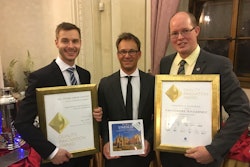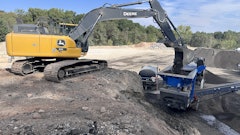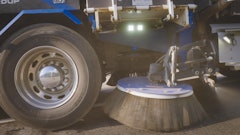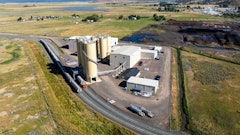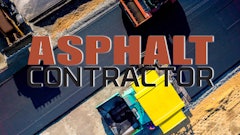
Volvo Construction Equipment (Volvo CE) presented its electric site solution and unveiled the new concept HX1 autonomous, battery electric, load carrier at the Xploration Forum in Eskilstuna, Sweden. The prototype machine is one element of an electric site research project that predicts up to a 95% reduction in carbon emissions and up to a 25% reduction in total cost of ownership. The project aims to electrify a transport stage in a quarry – from excavation to primary crushing and transport to secondary crushing. It involves developing new machines, work methods and site management systems.
Volvo Construction Equipment Unveils Futuristic Innovations to Drive Sustainability and Change
[VIDEO] Volvo Prototype HX1 Autonomous, Battery-electric Dump Truck
In addition to a fleet of HX1s, other prototype machines that make up the electric site system include a hybrid wheel loader and a grid-connected excavator. New technology encompasses machine and fleet control systems and logistic solutions for electric machines in quarries.
“This research project is a step toward transforming the quarry and aggregates industry,” says Johan Sjöberg, technical specialist in site automation at Volvo CE. “By using electricity instead of diesel to power construction equipment in a quarry, we have the potential to deliver significant reductions in fuel consumption, CO2 emissions, environmental impact and cost-per-tonne. The electrification of construction equipment will produce cleaner, quieter and more efficient machines. This represents the future of our industry.”
Electrifying Innovation
Volvo CE has teamed up with its customer Skanska Sweden, the Swedish Energy Agency and two Swedish universities – Linköping University and Mälardalen University – to collaborate on the SEK 203 million project. The initiative is jointly funded: Volvo CE has invested SEK 129 million, the Swedish Energy Agency has provided SEK 65 million (it awarded SEK 59 million to Volvo CE, SEK 5 million to Linköping University and SEK 1 million to Mälardalen University) and Skanska Sweden has contributed SEK 9 million.
Volvo CE is coordinating the project and is in charge of developing the machines and systems. Skanska Sweden is providing logistical solutions, application relevance and job site knowledge. The Swedish Energy Agency – a government agency for national energy policy issues – is helping to fund the project and the universities are carrying out research. Three PhD students are looking at energy management for electric vehicles, safe and robust software controls and energy-optimized work cycle control.
The project started in October 2015 and is due to be completed in late 2018. Volvo CE is currently developing and testing the technologies, concept and prototypes in-house. Skanska Sweden will incorporate the demonstration machines into its operations and test the electric site concept at a quarry in western Sweden, for 10 weeks at the end of 2018. After this, Volvo CE will examine the project results to see if the concept is viable for the industry. Currently, this work is just a research project, with no plans for industrialization at this stage.
“This type of cooperation between Volvo CE, its customers, governments and academia allows us to invest in new technologies and explore solutions that are both relevant for our customer base and address future challenges,” says Erik Uhlin, advanced engineering technical project leader at Volvo CE. “Each year, Volvo invests a substantial amount of money in emerging technologies, advanced engineering and product development. But without vital public funding and support from partners it would not be possible for research projects like this to go ahead.”

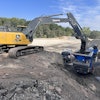

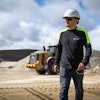
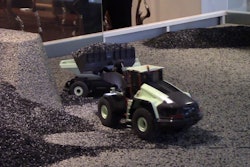
![[Video] Fleet Data & Customer Feedback Drive Volvo’s Connectivity Solutions](https://img.forconstructionpros.com/files/base/acbm/fcp/image/2017/03/default.58c81d53819a7.png?auto=format%2Ccompress&fit=crop&h=167&q=70&w=250)
![[VIDEO] Volvo HX-02 Prototype is Next Step for Autonomous Hauler](https://img.forconstructionpros.com/files/base/acbm/fcp/image/2017/03/default.58c1e4f09fa9b.png?auto=format%2Ccompress&fit=crop&h=167&q=70&w=250)
